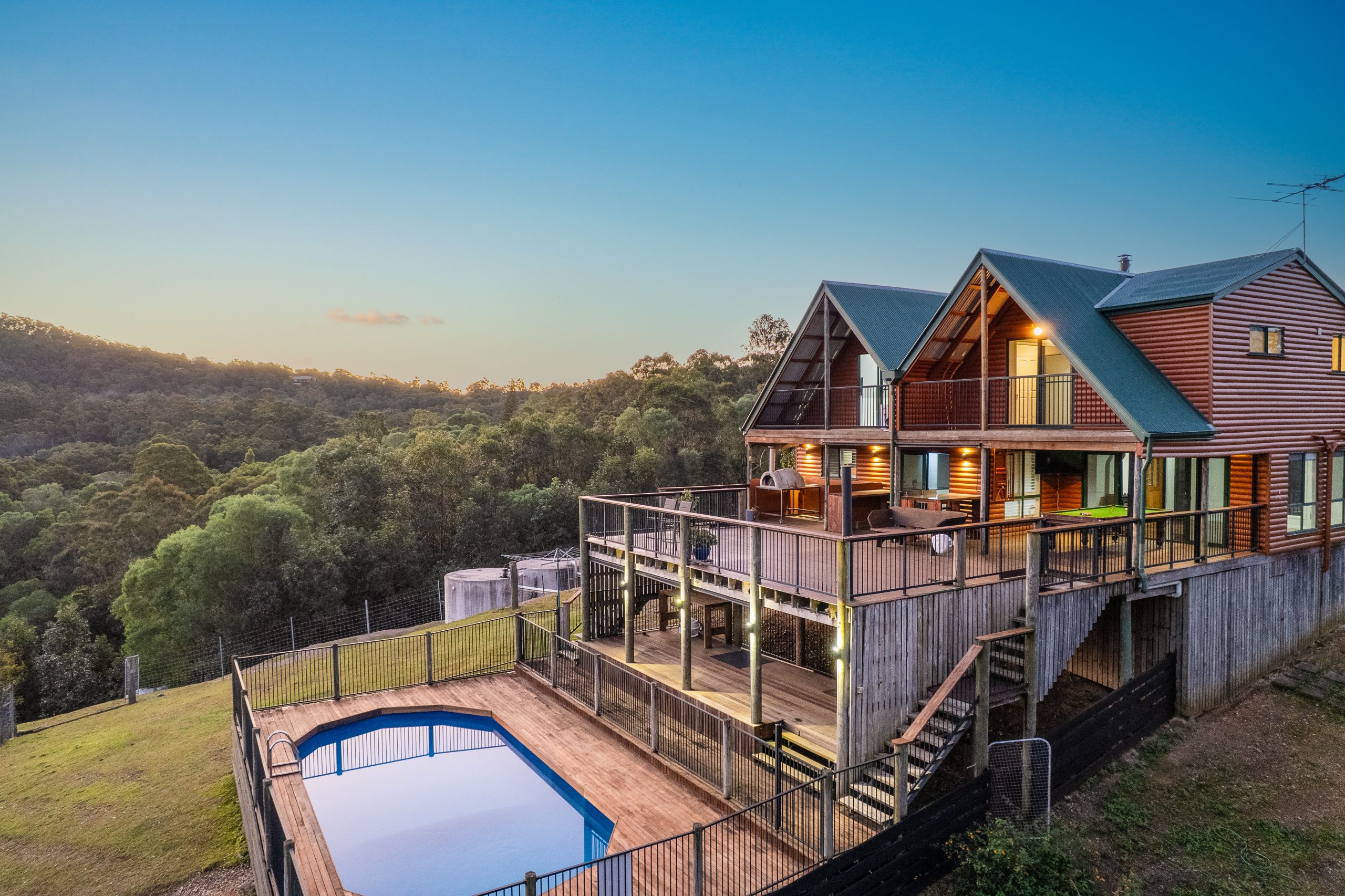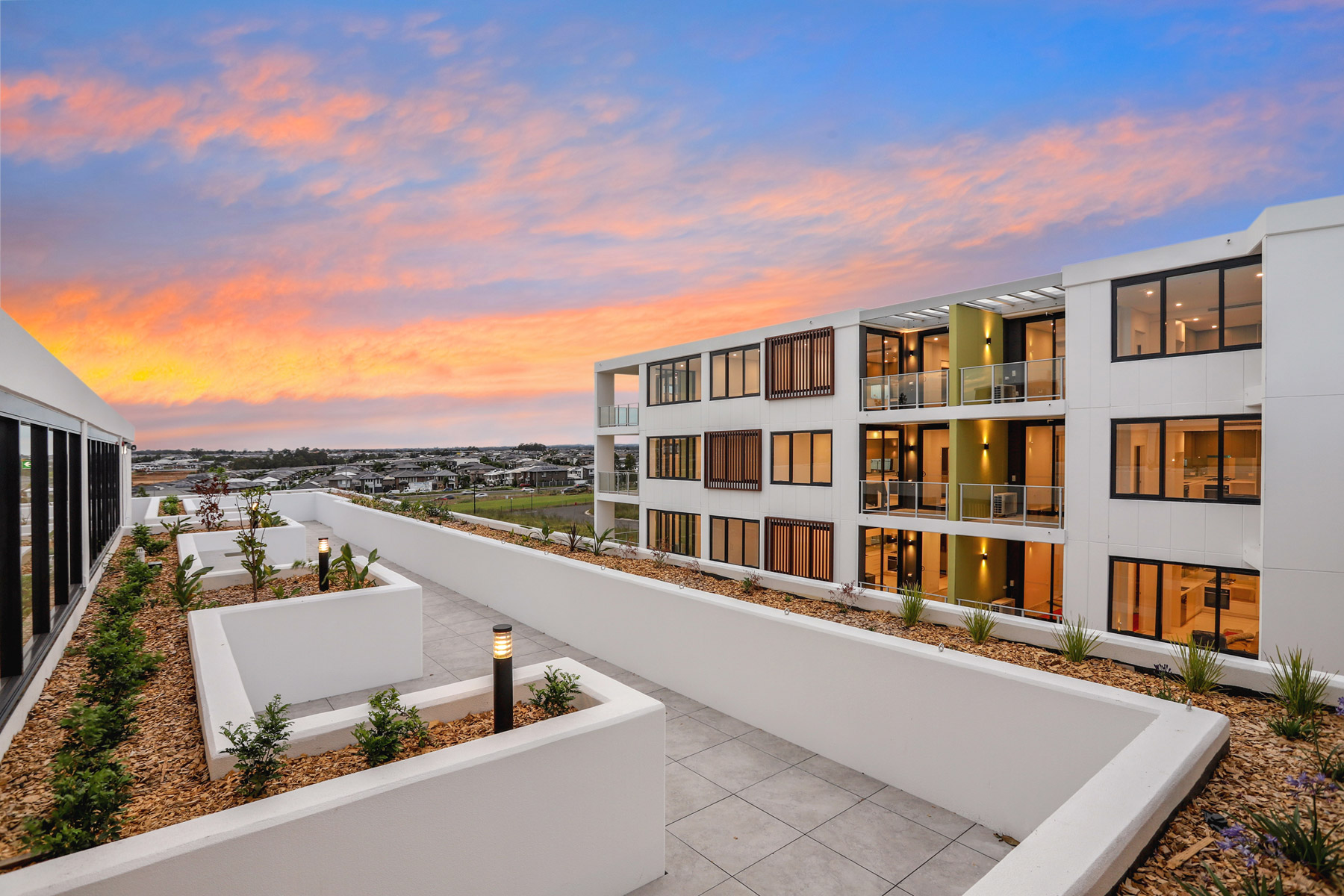Off the rails! Queensland home with converted train carriage for sale
Hilltop charm meets railway nostalgia at this quirky Queensland acreage featuring a converted Sunlander carriage.
A quirky wooden Queensland hilltop home has hit the market with a converted train carriage on site.
The five-bedroom two-bathroom property at 52 Ray Booker Court, Kobble Creek in Moreton Bay is being marketed by Vicki Pain, selling principal at Ray White Rural Dayboro and Eumundi.
Ms Pain has been selling real estate in the area for the last 20 years and said it was the first time she had listed a property with a train carriage.
“This home is very unique,” Ms Pain said. “It’s not often something like this comes to market – there’s certainly some charm and uniqueness to this property.
“It is only 42km from Brisbane’s CBD and creates one of the best lifestyle property markets, attracting retirees looking for space or families with great schools and an excellent local community.”

Known as ‘Twin Peaks’, the property is owned by Peter and Zena Martin, who lived there for 15 years before moving to Agnes Waters for a change of lifestyle.
Mr Martin said the converted train carriage was always a talking point among those who drove past or visited their home.
“I was running my own business from home and started with one bedroom being converted into an office,” Mr Martin said. “Converting a shed was an enormous amount of money so I found the train carriage online.
“There’s a lot of history to it – it’s an original staff sleeper carriage, number 1471, from Queensland Railways’ The Sunlander (1952) which now sits at the front of the property with privacy hedging.”
Mr Martin said the carriage had top and bottom bunks; however, the bottom bunks were removed and replaced with custom-made desks.
He said the original bunks were still in storage at the property.
Mr Martin also had a wall cut out within the carriage to make it a meeting room with five offices.
He said another young family would be best suited to the “quirky wooden home”.
Records keep falling in 2025 as harbourfront, beachfront and blue-chip estates crowd the top of the market.
A divide has opened in the tech job market between those with artificial-intelligence skills and everyone else.
The 2026 McGrath Report warns that without urgent reforms to planning, infrastructure and construction, housing affordability will continue to slip beyond reach for most Australians.
Australia’s housing market has reached a critical juncture, with home ownership and rental affordability deteriorating to their worst levels in decades, according to the McGrath Report 2026.
The annual analysis from real estate entrepreneur John McGrath paints a sobering picture of a nation where even the “lucky country” has run out of luck — or at least, out of homes.
New borrowers are now spending half their household income servicing loans, while renters are devoting one-third of their earnings to rent.
The time needed to save a 20 per cent deposit has stretched beyond ten years, and the home price-to-income ratio has climbed to eight times. “These aren’t just statistics,” McGrath writes. “They represent real people and real pain.”
McGrath argues that the root cause of Australia’s housing crisis is not a shortage of land, but a shortage of accessibility and deliverable stock.
“Over half our population has squeezed into just three cities, creating price pressure and rising density in Sydney, Melbourne and Brisbane while vast developable land sits disconnected from essential infrastructure,” he says.
The report identifies three faltering pillars — supply, affordability and construction viability — as the drivers of instability in the current market.
Developers across the country, McGrath notes, are “unable to make the numbers work” due to labour shortages and soaring construction costs.
In many trades, shortages have doubled or tripled, and build costs have surged by more than 30 per cent, stalling thousands of projects.
Need for systemic reform
McGrath’s prescription is clear: the only real solution lies in increasing supply through systemic reform. “We need to streamline development processes, reduce approval timeframes and provide better infrastructure to free up the options and provide more choice for everyone on where they live,” he says.
The 2026 edition of the report also points to promising trends in policy and innovation. Across several states, governments are prioritising higher-density development near transport hubs and repurposing government-owned land with existing infrastructure.
Build-to-rent models are expanding, and planning reforms are gaining traction. McGrath notes that while these steps are encouraging, they must be accelerated and supported by new construction methods if Australia is to meet demand.
One of the report’s key opportunities lies in prefabrication and modular design. “Prefabricated homes can be completed in 10–12 weeks compared to 18 months for a traditional house, saving time and money for everyone involved,” McGrath says.
The report suggests that modular and 3D-printed housing could play a significant role in addressing shortages while setting a new global benchmark for speed, cost and quality in residential construction.
Intelligent homes
In a section titled Weathering the Future: The Power of Smart Design, the report emphasises that sustainable and intelligent home design is no longer aspirational but essential.
It highlights new technologies that reduce energy use, improve thermal efficiency, and make homes more resilient to climate risks.
“There’s no reason why Australia shouldn’t be a world leader in innovative design and construction — and many reasons why we should be,” McGrath writes.
Despite the challenges, the tone of the 2026 McGrath Report is one of cautious optimism. Demand is expected to stabilise at around 175,000 households per year from 2026, and construction cost growth is finally slowing. Governments are also showing a greater willingness to reform outdated planning frameworks.
McGrath concludes that the path forward requires bold decisions and collaboration between all levels of government and industry.
“Australia has the land, demand and capability,” he says. “What we need now is the will to implement supply-focused solutions that address root causes rather than symptoms.”
“Only then,” he adds, “can we turn the dream of home ownership back into something more than a dream.”
By improving sluggish performance or replacing a broken screen, you can make your old iPhone feel new agai
Ophora Tallawong has launched its final release of quality apartments priced under $700,000.




















